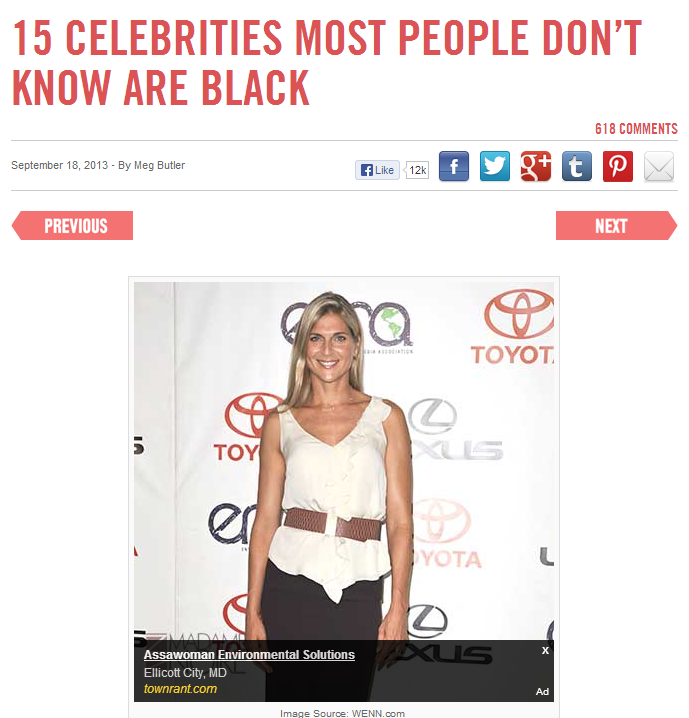Trends come and Trends Go.
There are 5 blogging trends that have come into fashion within the last year or so ago and are already either 1. proven ineffective; 2. are annoying; or 3. have value but are getting old to many people and will soon be completely out of fashion.
The offending new trends are:
1. Facebook or Google plus comment box. Within the last year Facebook, then Google plus, created a replacement of a traditional comment box that you see at the bottom of the most popular blog platform. Since 2008 many sites have also had Intense Debate or Disqus comment boxes. Recently, when Facebook added developer tools, many sites jumped on it because it enabled FB users to easily sign into a site using their Facebook account and comment. The tactic had several purposes: 1. to make interaction while online seamless and less time consuming; 2. to encourage people to comment; and 3. to enable sites to drive traffic back to their sites from commenters’ FB pages. But web browsers quickly realized they don’t necessarily want their friends knowing the sometimes controversial stuff they say when they comment on some sites. And some people weren’t on Facebook and thus were out of an option to participate in the conversation if they wanted to. Site owners that switched to FB comments only quickly noticed they were getting less replies than before, especially if they opted to hide away whatever comment box existed on their site before.
And as can be imagined the same type of failure happened when Blogger Blogs adopted Google’s comment box. People who didn’t have Google Plus Accounts didn’t want to have to sign up for a Gmail account just to leave a comment.
Personally, when I removed the FB and G+ comment box from one of my most highly trafficked site and replaced it with and IntenseDebate one, my comment feedback rate shot up like 200%! Lesson learned. Don’t mess with a good thing.
2. Slideshows – Some people find list posts annoying. Now imagine not being able to scroll down the list but being forced to scroll it via a slide show. By now many people have figured out that this tool, revolutionized by Huffington Post, is just a trick to get more clicks per site visitor. People don’t have the time in the day to sit thru and let a website reload with all the bazillion widgets, plugins, extensions and add-ons. They’ll rapidly decide the content and seeing number 4 to 10 on the list is just now worth it and move on.
Some sites, recognizing the growing intolerance for slideshows, are now giving readers the option to see the entire list at once. And they are also listing the thumbnails below the slideshow to enable faster click thru. A nice concession, but the trick is still annoying.
But, nonetheless, even Huffington Post is listening and just sticking with the traditional list style in some instances.
3.Top People You Need to Know Articles – 50 under 50, Ten Rising Actresses to Know, Top 30 best bloggers. While sites I’ve run have been the beneficiary of these types of honors usually bestowed by another website or other online institution, I still think they often times end up creating a lot of animosity towards the site or person creating the list. Inevitably , the comment section will be full of people chiming in on who was missed.
And in these hot socially-tense times, having a list of the top [fill in the blank] that excludes one gender or certain races is a formula for a PR nightmare as we’ve seen HERE (Top foreign language for business excludes language spoken by fastest growing population in the US, Spanish) and HERE (top Blacks on Twitter list that exludes women) and HERE (black women excluded) and HERE (journalists of color excluded).
And like with slidwshows, these top lists are also used as a mechanism to ensure more traffic to the award host’s site and to bolster the brand awareness of the list maker’s site. I think it is an awesome tool as I’ve used it successfully in the past in something as benign as the “top apps:- type of post before. But the negative feedback that comes from the sour grapers who are excluded may make them not worth it. I don’t foresee these going away soon because there will always be people who don’t make the list who still strive to one day be on it!
4. Stock photos. Many online publishers use them but after a while you start to see the same lady leaning on the desk with her shiny apple and the content below the photo just seem stale. You may ask yourself, have I seen this article before.
Dare to be different! If you have a camera, or even a camera function on your smart phone as most people have, take a photo or two of random objects, places, people and buildings as you go about your day, hang out with family on weekends and upload them at the end of each weekend into a file and build a file for blog posts. Soon you’ll have a wonderful file of your own stock images.
5. QR Codes. These square bar codes which stand for “quick response” were hot a couple years ago and were quickly adopted by marketing companies and slapped onto all sorts of products packaging. The concept was to allow consumers to use their smartphones to snap a code image and then be given access to some special discounts and information about the product. The conference & seminar event-production biz adopted them as a way of verifying what level of access attendees purchased and could access. They could be used for networking too. Back in June 2011, inc reports, comScore estimated that 14 million Americans scanned QR codes with their mobile phones. But that really was just 6.2% of the total mobile audience. Womp womp womp! And most consumers don’t know how to use them. It was just unnecessary.
I think the genius of QR codes died this summer when the popular Blackberry-only messenger app WhatsApp opened up to the Android and iPhone market & with that access people on these new platforms were given QR codes as an option to having friends jot down a complicate pin. What happened next? The smart people of Instagram started posting their codes asking their friends, who most likely were viewing their codes on their own phones, to scan in said codes to get access to their personal WhtatsApp pin.
um……. yeah.
It’s best some new things just pass like the fads they were meant to be….
Jeneba Jalloh Ghatt writes on the intersection of Politics and Techonology! Follow her on Twitter and G+!
Jay Jay Ghatt is also editor at Techyaya.com, founder of the JayJayGhatt.com and JayJayGhatt.com where she teaches online creators how to navigate digital entrepreneurship and offers Do-It-For-You Blogging Service. She manages her lifestyle sites BellyitchBlog, Jenebaspeaks and JJBraids.com and is the founder of BlackWomenTech.com 200 Black Women in Tech On Twitter. Her biz podcast 10 Minute Podcast is available on iTunes and Player.fm. Follow her on Twitter at @Jenebaspeaks. Buy her templates over at her legal and business templates on Etsy shop!








